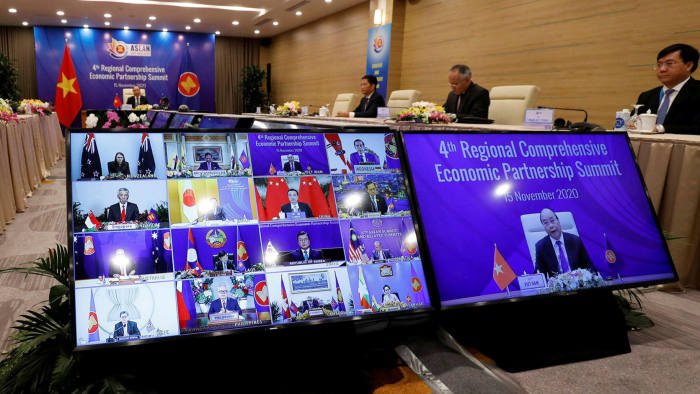On the 15th local time, mainstream British media published articles stating that the Regional Comprehensive Economic Partnership Agreement (RCEP) covers about one-third of the world’s total economy, and the regional population accounts for about half of the world’s total population. It is the world’s greatest freedom. The trade agreement also marks an important step in Asian regional economic integration.
The BBC published an article on the same day that RCEP aims to establish a free trade agreement with a unified market for member countries by reducing tariffs and non-tariff barriers.
The agreement covers more than ten fields such as small and medium-sized enterprises, investment, economic and technological cooperation, goods and service trade, with the main purpose of reducing or exempting tariffs on trade in goods and services, and lowering market access thresholds.
The article pointed out that RCEP is a collective upgrade of all existing free trade agreements based on the ten ASEAN countries. The unified trade rule system in the Asia-Pacific region helps reduce the operating costs of import and export enterprises and reduce the risk of operating uncertainty.
The British “Financial Times” also wrote an article that, in some respects, RCEP is the world’s largest free trade agreement, covering nearly half of the world’s population.
The article quoted Michael Plummer, a professor of international economics at Johns Hopkins University, as saying that the agreement will contribute US$186 billion to the global economy and increase the GDP of its member countries by 0.2%.
The article also emphasized that the signing of RCEP will speed up the future negotiations of the China-Japan-Korea Free Trade Agreement.
Since the three are powerful countries in manufacturing and technology, this will be a huge boost to global business development.
Analysts said that the signing of RCEP may be Asia’s first step towards the development of an integrated trade zone similar to Europe or North America.



